Adana Ethnography Museum - Adana Etnografya Müzesi [EN-TR]
Hello all, after a week full of stress and health problems, I can say that I feel good now. I'm going to share with you the Adana Ethnography Museum that I visited just before my ear was blocked. Fasten your seat belts because we are going into the museum at full speed!
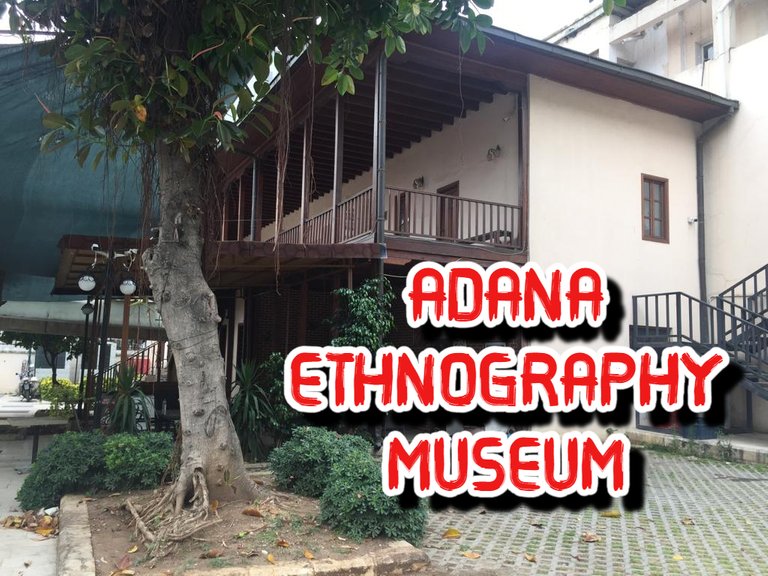
From the outside, the Adana Ethnography Museum resembles the mansions in Adana. I really liked the fact that it was built in this style. Visiting ethnography museums is a special pleasure for me because only here we can see how people used things in the past. I love to imagine those days, people's lives and living standards.


This museum is designed like a house. Everything that was in the rooms many years ago has been placed exactly the same. There are such information signs right in front of the rooms. This sign you see here talks about the history of Adana. The first settlement in Adana dates back to 10 thousand years ago. Adana, which has seen many kingdoms, is really culturally very rich. Since 1922, it has been a city of the Republic of Turkey.

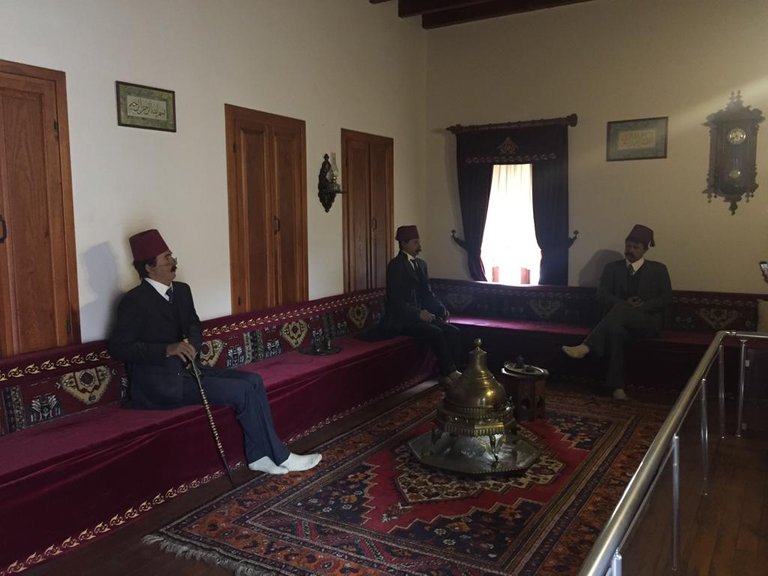
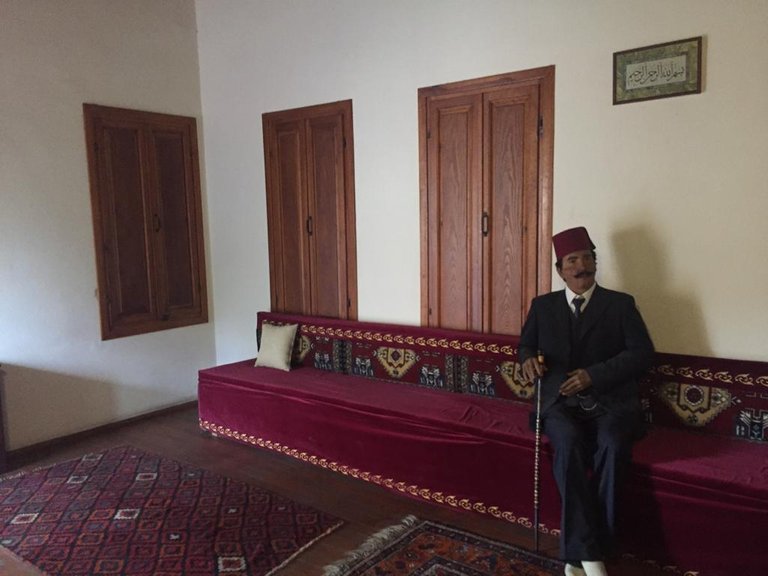
The photographs you see here are of the room called the "head room". According to the research I did on the internet, I can say that this room is today's hall. People gathered here during the day, sat, chatted, drank coffee. In short, I can say that when a guest comes, they are hosted here. Inside you can see people's daily clothes and sitting styles. Also, the furniture and decorations in the house are very realistic. I can say that there are still cushions that people lean on in our house in the village. A wall clock similar to the one here used to be in my grandmother's house.

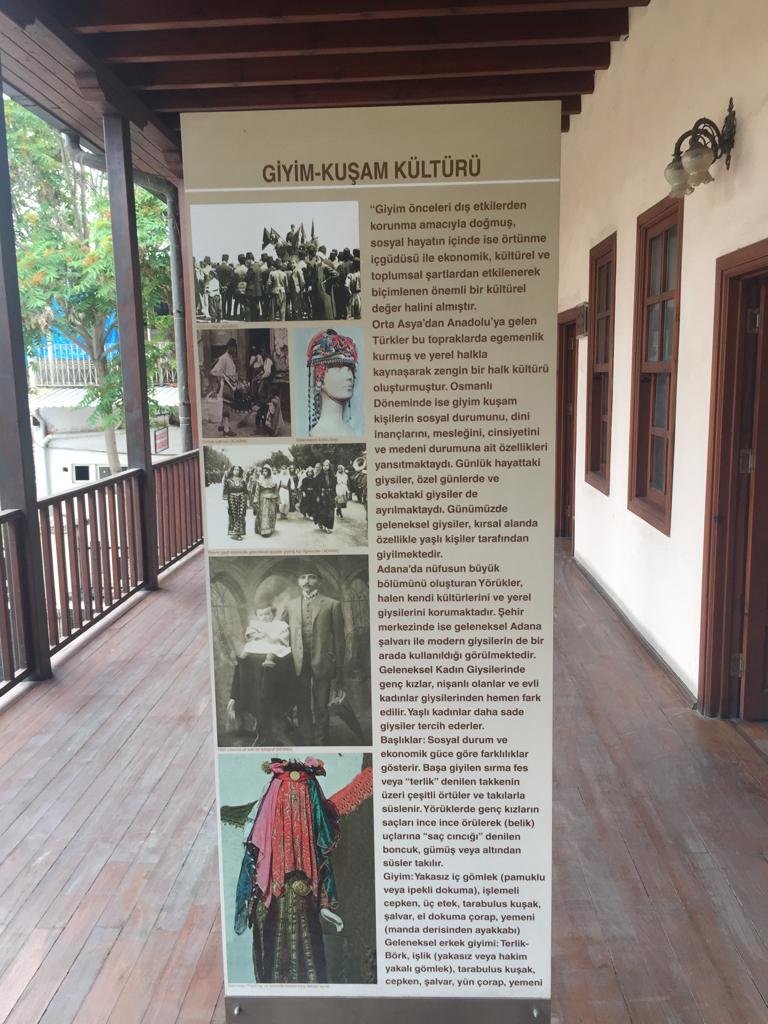
This information board also talks about the clothing culture of people in Adana. In the past, it was very possible to recognize people's economic status and social class by the way they dressed. The clothing culture of the nomads, who make up a large population in Adana, is also mentioned. You can see these in the photographs. There is an interesting detail about women's clothing. In the past, single, engaged and married people dressed differently from each other. So you could distinguish this when you look at them. It was very interesting to me, such a thing is not possible today.




The second room is the "daily room". I don't know why it has such a name, but as you can see, people do their work in this room. In the photographs you can see women spinning wool or weaving rugs. I must say that the wax sculptures are excellently made. I came here with my cousin and it was sometimes hard to tell that they were sculptures. They looked like real people. I remember 20 years ago my grandparents had a rug weaving tool on their balcony that looked very similar to this one. And the rug on the floor is exactly the same as the ones we used to use. I can say that Adana culture and Karaman culture are similar. Even though there are differences, the culture is the same in many parts of Anatolia. The beaded decorations hanging on the walls are very similar to the ones I used to make in my childhood. I guess it is better than a blank wall.


Traditional handicrafts are mentioned here. At that time, people were producing items they could use at home without knowing that they were practicing an art. Woven products such as rugs, sackcloth, carpets, socks, saddlebags, sacks and products that require woodworking such as chests, cabinets and rolling pins are the most produced products.


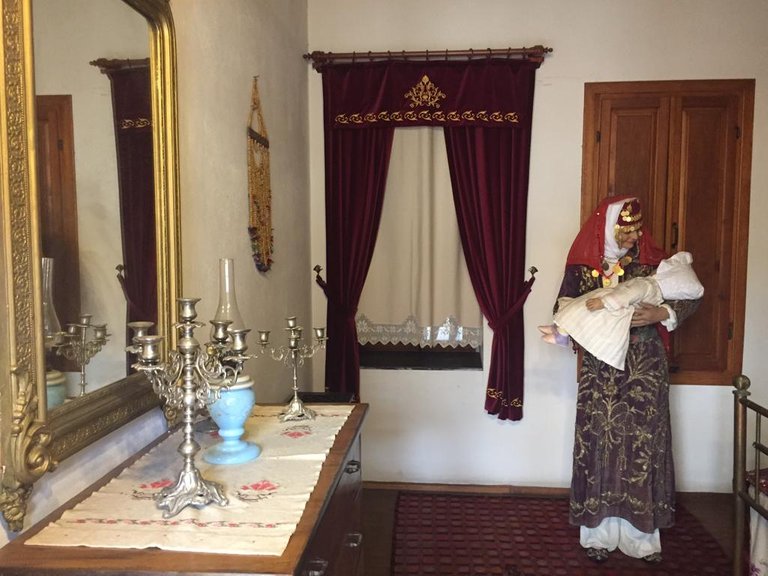
The third room of the museum is the "bridal room". I did not expect it to be such a specific room. As you can see, it is a classic bedroom. I am sure many of you have seen such rooms in old movies. A big mirror on the wall, candlesticks, a beautiful curtain, a big wide bed. Exactly as it should be. You see how rich people were in the past. The gold on the bride shows that. And her dress is also very elegant.

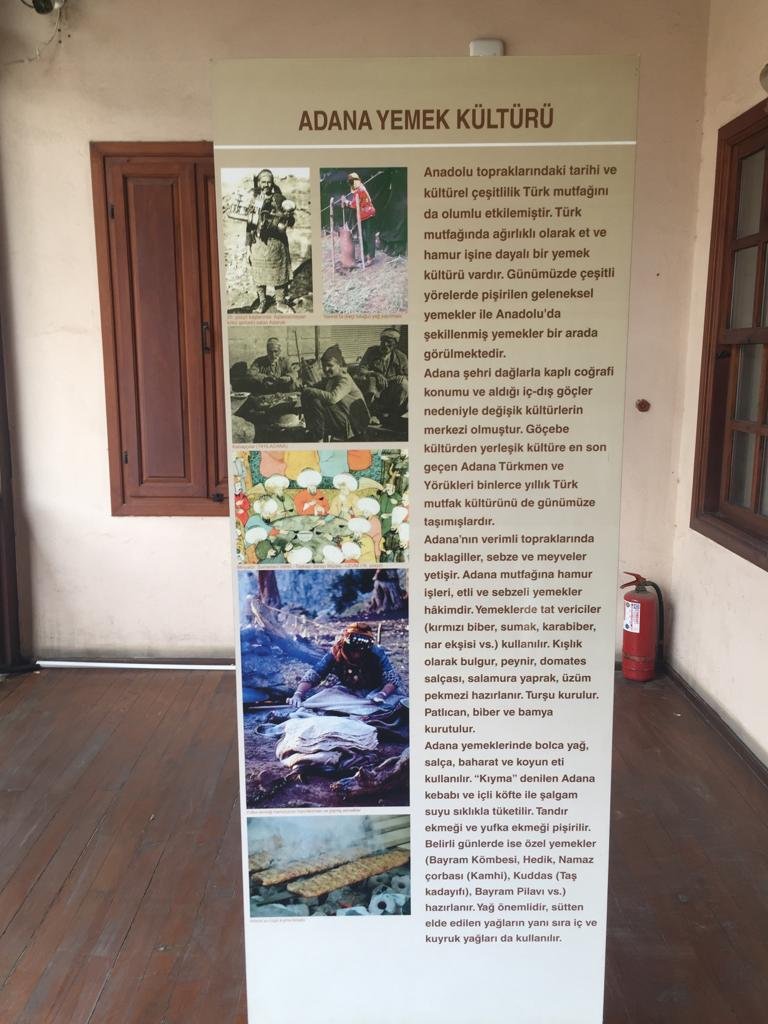
This information sign also talks about Adana and Anatolian cuisine. One of the first things that comes to mind when you think of Adana is its cuisine because there are so many different and delicious dishes. Adana cuisine is dominated by pastries and meat products. The spice culture is also very developed. You can see products such as garlic, sumac, black pepper, pomegranate syrup in all home cooking. Oil is also used abundantly in food. One of the things that gives flavor to kebab, the most well-known dish of Adana, is that it is oily.

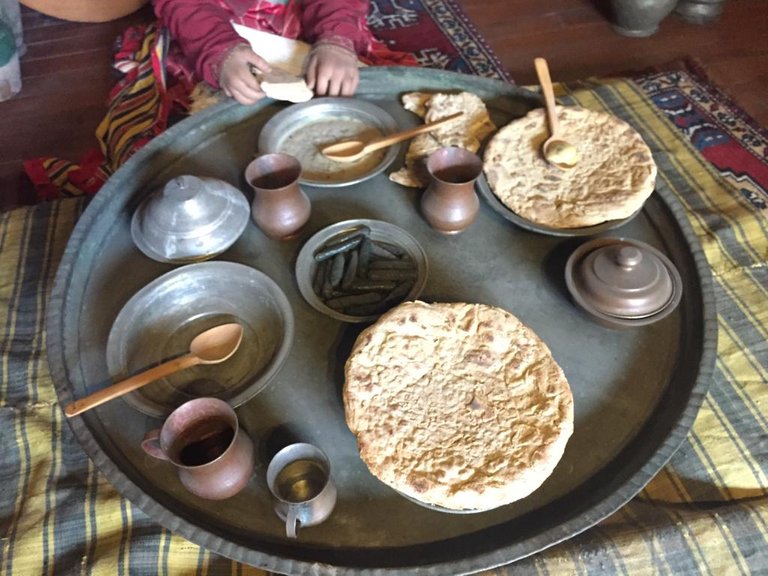
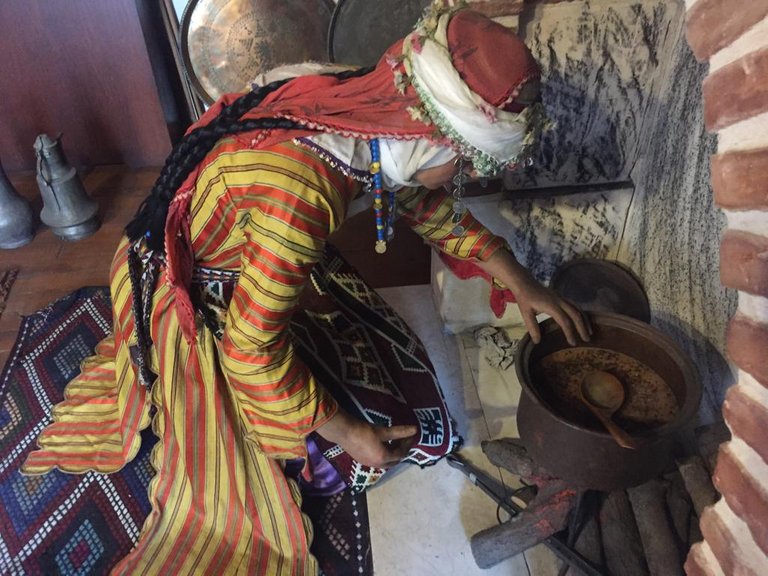
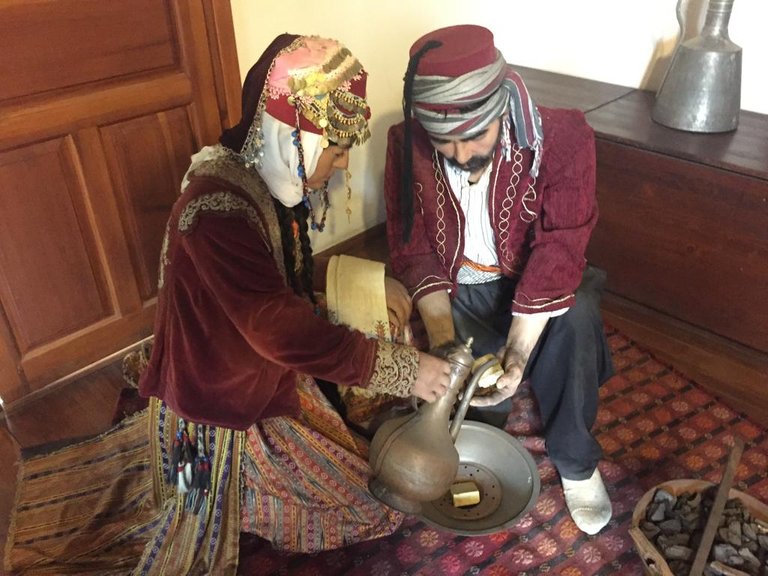
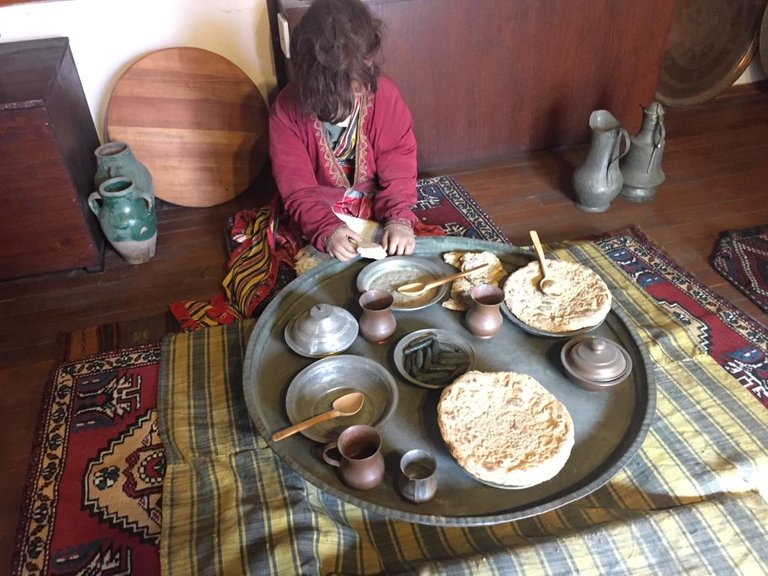
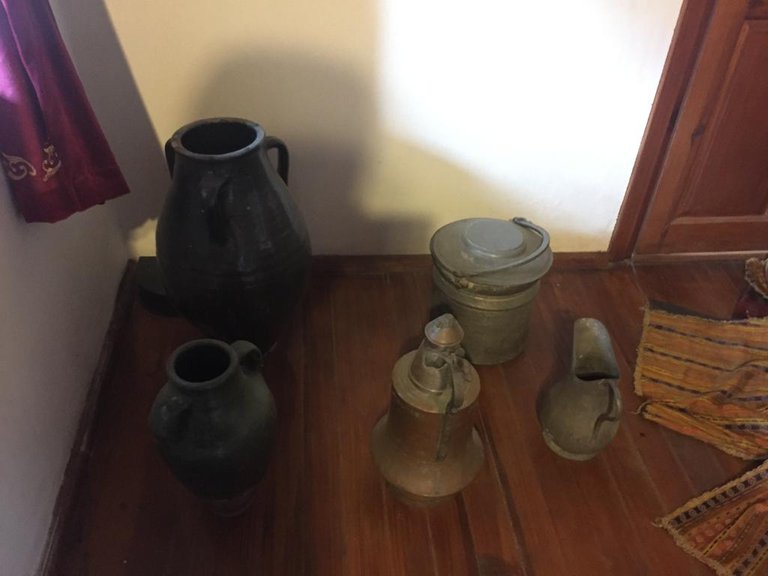
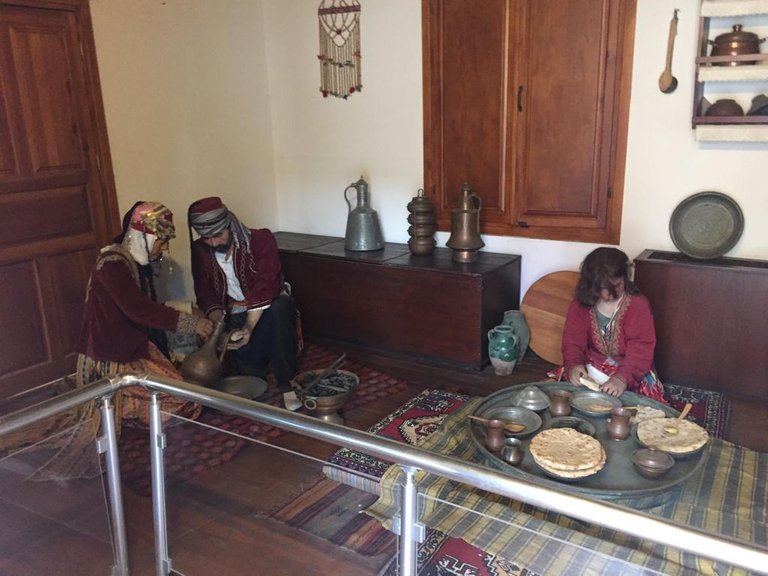
The last room in this museum is the "kitchen". Of course, if you are visiting the ethnography museum in Adana, it would be impossible not to mention the kitchen. This room definitely contains a lot of detail. For example, in the soup that the woman cooks, there is a detail about how oily the food is. Washing hands before eating is also a very common culture in Turkey. In the conditions of the period, people washed their hands with water poured from buckets. In the photographs you can see the water and dry food storage products used in the past. I have used similar water basins to the ones here in the past. A young woman is eating at the table. On the table you can see the bread that people baked themselves, not bought from the market. In the past, people used to eat their meals not at the table but sitting around a cloth they spread on the ground. We still eat this way in the village.


To be honest, I was a bit offended that the lady didn't invite me for dinner because I was already full and I was just going to taste the food, but she was so hungry that she didn't even look at me 🤣🤣
Bonus


Actually, on the same day I also visited the Catholic Church of St. Paul (Bebekli Kilise), but unfortunately I couldn't take photos of it because photography was forbidden inside. It was an impressive experience, there were beautiful paintings inside. I would have loved to share them with you. Obviously I had the chance to take photos but I didn't want to break the rules.

It was a good day for me and I hope you enjoyed reading it. Don't forget to leave your thoughts about the museum in the comments. Take care and have a great day!
TR
Hepinize merhaba, stresli ve sağlık problemleri dolu bir haftadan sonra şu an kendimi iyi hissettiğimi söyleyebilirim. Sizlerle kulağım tıkanmadan hemen önce gezdiğim Adana Etnografya Müzesi'ni paylaşacağım. Kemerlerinizi bağlayın çünkü son hız müzeye giriyoruz!

Adana Etnografya Müzesi dışarıdan bakıldığında Adana'daki konakları andırıyor. Bu tarzda inşa edilmiş olması benim çok hoşuma gitti. Etnografya müzelerini ziyaret etmek benim için ayrı bir zevk çünkü ancak burada insanların geçmişte neleri nasıl kullandığını görebiliyoruz. O günleri, insanların hayatını ve yaşam standartlarını hayal etmeyi çok seviyorum.


Bu müze bir ev gibi tasarlanmış. Bundan yıllar öncesindeki odaların içinde ne varsa hepsi bire bir yerleştirilmiş. Odaların hemen önünde bu tarz bilgi levhaları var. Bu gördüğünüz levhada Adana'nın tarihinden bahsediliyor. Adana'da ilk yerleşim milattan önce 10 bin yıl öncesine kadar dayanıyor. Birçok krallık gören Adana gerçekten kültürel olarak çok zengin. 1922 yılından itibaren de Türkiye Cumhuriyeti'nin bir şehri.



Bu gördüğünüz fotoğraflar "baş oda" olarak adlandırılan odanın fotoğrafları. İnternetten yaptığım araştırmalarda bu odanın günümüzün salonu olduğunu söyleyebilirim. İnsanlar gün içinde burada toplanıp oturuyor, sohbet muhabbet ediyor, kahve içiyor. Kısaca bir misafir geldiği zaman burada ağırlanıyor diyebilirim. İçeride insanların günlük kıyafetlerini, oturma tarzlarını görebilirsiniz. Ayrıca evdeki eşya ve dekorlar da çok gerçekçi. Hala köydeki evimizde insanların sırtını yasladığı minderlerden olduğunu söyleyebilirim. Yine buradakine benzer bir duvar saati eskiden anneannemlerin evinde vardı.


Bu bilgi panosunda da Adana'daki insanların giyim kuşam kültüründen bahsediliyor. İnsanların giyimine bakarak ekonomik durumunu ve toplumdaki sınıfını fark etmeniz geçmişte çok mümkündü. Adana'nın büyük nüfusunu oluşturan yörüklerin giyim kültüründen de bahsedilmiş. Fotoğraflarda bunları görebilirsiniz. Kadınların giyimiyle ilgili ilginç bir detay var. Eskiden bekar, nişanlı, evli insanların giyimleri birbirinden farklıymış. Yani siz baktığınızda bunu ayırt edebiliyormuşsunuz. Bana çok ilginç geldi, günümüzde böyle bir şey mümkün değil.




İkinci oda, "günlük oda". Neden böyle bir ismi var bilmiyorum ama gördüğünüz üzere bu odada insanlar işlerini hallediyor. Fotoğraflarda yün eğiren ya da kilim dokuyan kadınları görebilirsiniz. Balmumu heykellerin mükemmel yapıldığını söylemeliyim. Buraya kuzenimle geldik ve heykel olduklarını anlamak bazen çok zordu. Gerçek insanlar gibiydiler. Bundan 20 yıl önce babaannemlerin balkonunda buna çok benzeyen bir kilim dokuma aleti olduğunu hatırlıyorum. Ayrıca yerdeki kilim de bizim eskiden kullandıklarımızın bire bir aynısı. Adana kültürüyle Karaman kültürünün benzediğini söyleyebilirim. Zaten arada farklar olsa da Anadolu'nun pek çok yerinde kültür aynıdır. Duvarlarda asılı olan boncuklu dekorlar da çocukluğumda benim yaptıklarıma çok benziyor. Sanırım duvarın boş durmasından iyidir.


Burada geleneksel el sanatlarından bahsediliyor. İnsanlar o zaman bir sanat icra ettiğinden habersiz evinde kullanabileceği eşyaları üretiyordu. Kilim, çul, halı, çorap, heybe, çuval gibi dokuma ürünleri ve sandık, dolap, oklava gibi odun işçiliği gerektiren ürünler en çok üretilen ürünlerdir.



Müzenin üçüncü odası "gelin odası". Böyle spesifik bir oda olmasını beklemiyordum. Gördüğünüz gibi klasik bir yatak odası. Eminim birçoğunuz izlediğiniz eski filmlerde bu tarz odalar görmüşsünüzdür. Duvarda büyük bir ayna, şamdanlar, güzel bir perde, büyük geniş bir yatak. Tam olarak olması gerektiği gibi. Geçmiş dönemlerde insanların ne kadar zengin olduğunu görüyorsunuz. Gelinin üzerindeki altınlar bunu gösteriyor. Ayrıca elbisesi de oldukça şık.


Bu bilgi tabelasında da Adana ve Anadolu mutfağından bahsediliyor. Adana denince akla ilk gelen şeylerden biri mutfağıdır çünkü çok çeşitli ve lezzetli yemekler var. Adana mutfağına genellikle hamur işi ve et ürünleri hakim. Ayrıca baharat kültürü çok gelişmiş. Ev yemeklerinin hepsinde sarımsak, sumak, karabiber, nar ekşisi gibi ürünleri görebilirsiniz. Ayrıca yağ yemeklerde bolca kullanılır. Adana'nın en bilinen yemeği olan kebaba lezzet veren şeylerden biri de yağlı olmasıdır.







Bu müzedeki son oda "mutfak". Tabi ki Adana'da etnografya müzesi geziyorsanız mutfağından bahsetmemek olmaz. Bu oda kesinlikle çok fazla detay içeriyor. Örneğin kadının pişirdiği çorbada yemeklerin ne kadar yağlı olduğuna dair bir detay var. Keza yemekten önce elleri yıkamak da Türkiye'de çok yaygın bir kültürdür. Dönemin şartlarında insanlar ellerini güğümlerden döktükleri sularla yıkıyordu. Fotoğraflarda geçmiş dönemde kullanılan su ve kuru gıda saklayıcı ürünleri gelebilirsiniz. Buradaki güğümlerin benzerini geçmişte ben de kullandım. Bir genç hanım da sofrada yemek yiyor. Sofrada insanların marketten aldığı değil kendileri pişirdiği ekmeği görebilirsiniz. Eskiden insanlar yemeklerini masada değil yere serdikleri bir örtünün etrafında oturarak yerlerdi. Biz köyde hala bu şekilde yiyoruz.


Açıkçası hanımefendiye beni yemeğe davet etmediği için biraz kırıldım. Zira zaten toktum ve sadece yemeklerin tadına bakacaktım ama kendisi çok aç olduğu için yüzüme bile bakmadı 🤣🤣
Bonus


Aslında aynı gün içinde Aziz Pavlus Katolik Kilisesi'ni(Bebekli Kilise) de ziyaret ettim ama maalesef içeride fotoğraf çekmek yasak olduğu için oranın fotoğraflarını çekemedim. Etkileyici bir deneyimdi, içeride güzel tablolar vardı. Onları da sizinle paylaşmayı çok isterdim. Açıkçası fotoğrafları çekme şansım vardı ama kuralları çiğnemek istemedim.

Benim için iyi bir gündü, umarım siz de okurken keyif almışsınızdır. Müzeyle ilgili düşüncelerinizi yorumlara yazmayı unutmayın. Kendinize iyi bakın ve harika bir gün geçirin!
Congratulations, your post has been added to Pinmapple! 🎉🥳🍍
Did you know you have your own profile map?
And every post has their own map too!
Want to have your post on the map too?
Thanks for adding to map 🍍
@tipu curate 2
Upvoted 👌 (Mana: 2/42) Liquid rewards.
Thank you so much for your support @damla & @trliste
Adana'nın kültürü ve geçmişi güzel yansıtılmış. Sizde çok güzel aktarmışsınız. Sayenizde gezmiş oldum. Ayrıca bebekli kiliseyi çok merak ettim umarım bir gün ziyaret ederim. teşekkürler.
Beğenmenize çok sevindim, elimden geldiğince tane tane ve ayrıntılı anlatmaya çalışıyorum. Umarım siz de bir gün ziyaret edersiniz.
Müze hoşuma gitti. Ama Etnoğrafya deyince daha farklı eserler bekliyordum. Heykeller de dediğin gibi aşırı gerçekçi olmuş, oturup sohbet edesi gelir insanın ☺️
Vallahi konuşsalar edilirdi sohbet 😂 Eski Türkiye'yi anlatsınlar ben de oturup dinleyeyim, bakalım neler olmuş neler bitmiş 😅
Hiya, @LivingUKTaiwan here, just swinging by to let you know that this post made it into our Honorable Mentions in Daily Travel Digest #1909.
Your post has been manually curated by the @pinmapple team. If you like what we're doing, please drop by to check out all the rest of today's great posts and consider supporting other authors like yourself and us so we can keep the project going!
Become part of our travel community:
Thank you so much @livinguktaiwan 🍍 I appreciate your support
I see very good history is collected in this museum. Those dummy peoples looks like real people. And man, those buns looks so so real.
Yeah right? It looks like real! Glad you liked it mate
What an interesting museum. It adds to the list of places I want to visit in the future.
Nice! I hope you can visit here one day 😊
Reading through this post, I miss Turkey so much! Gosh, I loved it there, even though I've never been to Adana, I see that bread in the museum and remember how good that always tasted for a starter eating in every restaurant, lol.
Thanks for bringing up good memories!
!PIMP
You must be killin' it out here!
@thisismylife just slapped you with 1.000 PIMP, @incublus.
You earned 1.000 PIMP for the strong hand.
They're getting a workout and slapped 1/2 possible people today.
Read about some PIMP Shit or Look for the PIMP District
Yes, in many restaurants in Turkey, if you order a kebab or something similar, they send you bread in advance. Fresh and warm bread! I hope you can visit again.
That museum is really great. It is very well cared for and clearly shows the historical moment to which it refers.